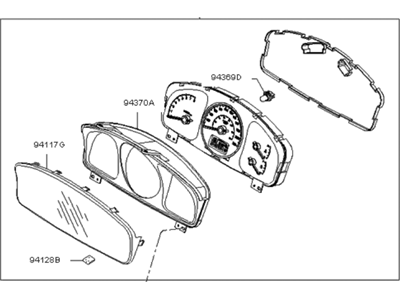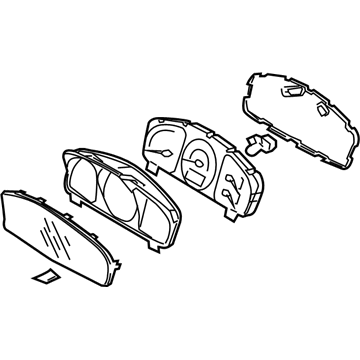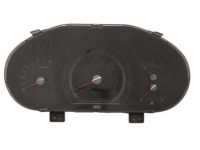×
- Hello
- Login or Register
- Quick Links
- Live Chat
- Track Order
- Parts Availability
- RMA
- Help Center
- Contact Us
- Shop for
- Kia Parts
- Kia Accessories

My Garage
My Account
Cart
Genuine Kia Sportage Instrument Cluster
Speedometer Instrument Cluster- Select Vehicle by Model
- Select Vehicle by VIN
Select Vehicle by Model
orMake
Model
Year
Select Vehicle by VIN
For the most accurate results, select vehicle by your VIN (Vehicle Identification Number).
111 Instrument Clusters found
Kia Sportage Cluster Assembly-Instrument
Part Number: 940011F042$500.97 MSRP: $735.64You Save: $234.67 (32%)Ships in 1-3 Business DaysKia Sportage Cluster Assembly-Instrument
Part Number: 940011F043$500.97 MSRP: $735.64You Save: $234.67 (32%)Ships in 1-3 Business DaysKia Sportage Cluster Assembly-Instrument
Part Number: 940011F046$500.97 MSRP: $735.64You Save: $234.67 (32%)Ships in 1-3 Business DaysKia Sportage Cluster Assembly-Instrument
Part Number: 940011F052$500.97 MSRP: $735.64You Save: $234.67 (32%)Ships in 1-3 Business DaysKia Sportage Cluster Assembly-Instrument
Part Number: 940011F053$500.97 MSRP: $735.64You Save: $234.67 (32%)Ships in 1-3 Business DaysKia Sportage Cluster Assembly-Instrument
Part Number: 940011F100$500.97 MSRP: $735.64You Save: $234.67 (32%)Ships in 1-3 Business DaysKia Sportage Cluster Assembly-Instrument
Part Number: 940011F101$500.97 MSRP: $735.64You Save: $234.67 (32%)Ships in 1-3 Business DaysKia Sportage Cluster Assembly-Instrument
Part Number: 940011F102$500.97 MSRP: $735.64You Save: $234.67 (32%)Ships in 1-3 Business DaysKia Sportage Cluster Assembly-Instrument
Part Number: 940011F103$500.97 MSRP: $735.64You Save: $234.67 (32%)Ships in 1-3 Business DaysKia Sportage Cluster Assembly-Instrument
Part Number: 940011F112$514.21 MSRP: $735.64You Save: $221.43 (31%)Ships in 1-3 Business DaysKia Sportage Cluster Assembly-Instrument
Part Number: 940011F166$500.97 MSRP: $735.64You Save: $234.67 (32%)Ships in 1-3 Business DaysKia Sportage Cluster Assembly-Instrument
Part Number: 940011F167$500.97 MSRP: $735.64You Save: $234.67 (32%)Ships in 1-3 Business DaysKia Sportage Cluster Assembly-Instrument
Part Number: 940011F168$500.97 MSRP: $735.64You Save: $234.67 (32%)Ships in 1-3 Business DaysKia Sportage Cluster Assembly-Instrument
Part Number: 940011F172$500.97 MSRP: $735.64You Save: $234.67 (32%)Ships in 1-3 Business DaysKia Sportage Cluster Assembly-Instrument
Part Number: 940041F041$514.21 MSRP: $735.64You Save: $221.43 (31%)Ships in 1-3 Business DaysKia Sportage Cluster Assembly-Instrument
Part Number: 940041F051$514.21 MSRP: $735.64You Save: $221.43 (31%)Ships in 1-3 Business DaysKia Sportage Cluster Assembly-Instrument
Part Number: 940041F101$514.21 MSRP: $735.64You Save: $221.43 (31%)Ships in 1-3 Business DaysKia Sportage Cluster Assembly-Instrument
Part Number: 940041F166$514.21 MSRP: $735.64You Save: $221.43 (31%)Ships in 1-3 Business DaysKia Sportage Cluster Assembly-Instrument
Part Number: 940211F431$510.99 MSRP: $750.35You Save: $239.36 (32%)Ships in 1-3 Business DaysKia Sportage Cluster Assembly-Instrument
Part Number: 940011F041$553.37 MSRP: $812.59You Save: $259.22 (32%)Ships in 1-3 Business Days
| Page 1 of 6 |Next >
1-20 of 111 Results
Kia Sportage Instrument Cluster
If you're in search of top-notch, reasonably priced OEM Kia Sportage Instrument Cluster, then you've found the perfect spot. Our website boasts an extensive inventory of Kia Sportage Instrument Cluster, all priced at the market's premier price. Rest assured, every genuine part we offer comes with a warranty straight from the manufacturer.
Kia Sportage Instrument Cluster Parts Questions & Experts Answers
- Q: What challenges do home mechanics face when removing the instrument panel, and what steps should they follow for successful reassembly on Kia Sportage?A:This procedure becomes difficult for home mechanics since many fasteners used are concealed, and complex angles are difficult to access, and there are many electrical connectors that require to be marked and disconnected. However, it should only be done where the person is quite comfortable with do it yourself projects and experiences. This is particularly very useful while removing the instrument panel because during the replacement process, one has to take good notes of how and where each part was removed and how it was placed or fixed. While not strictly necessary, it is recommended to remove both of the front seats as they will free up some more working space and can easily be damaged on the trail. The sequence of the undertaking to be explained below is as follows; 2003 and earlier models will require the negative battery terminal to be disconnected first, secondly, steering wheel has to be detached, thirdly the center console, fourthly, the dashboard trim panels, fifthly the instrument cluster, sixthly the radio, seventh the heater/air conditioner control assembly, and eighth the securing fasteners of the steering column. One has to remove their side dashboard covers and kick panels; they have to disconnect many electrical connectors. Once the instrument panel is unbolted, it should be pulled or lifted through the route of the passenger's door. On the vehicles made after 2004, most of the steps are performed in the similar manner with the addition of tasks such as the removal of weatherstrips, trim covers, and steering column. The instrument panel assembly is then taken off after all wires that are in the way have been detached. For Sportage models, the process includes the use of trim panel retaining screws, A-pillar trim panels, instrumental panel end covers, and several system assemblies such as the airbag, steering wheel, and other assemblies and electrical connectors, followed by other help to achieve the removal of the instrumental panel. For all models, the process of reinstallation is carried out in the reverse sequence.
Related Kia Sportage Parts
Browse by Year
2024 Instrument Cluster 2023 Instrument Cluster 2022 Instrument Cluster 2021 Instrument Cluster 2020 Instrument Cluster 2019 Instrument Cluster 2018 Instrument Cluster 2017 Instrument Cluster 2016 Instrument Cluster 2015 Instrument Cluster 2014 Instrument Cluster 2013 Instrument Cluster 2012 Instrument Cluster 2011 Instrument Cluster 2010 Instrument Cluster 2009 Instrument Cluster 2008 Instrument Cluster 2007 Instrument Cluster 2006 Instrument Cluster 2005 Instrument Cluster 2002 Instrument Cluster 2001 Instrument Cluster 2000 Instrument Cluster 1999 Instrument Cluster 1998 Instrument Cluster 1997 Instrument Cluster















